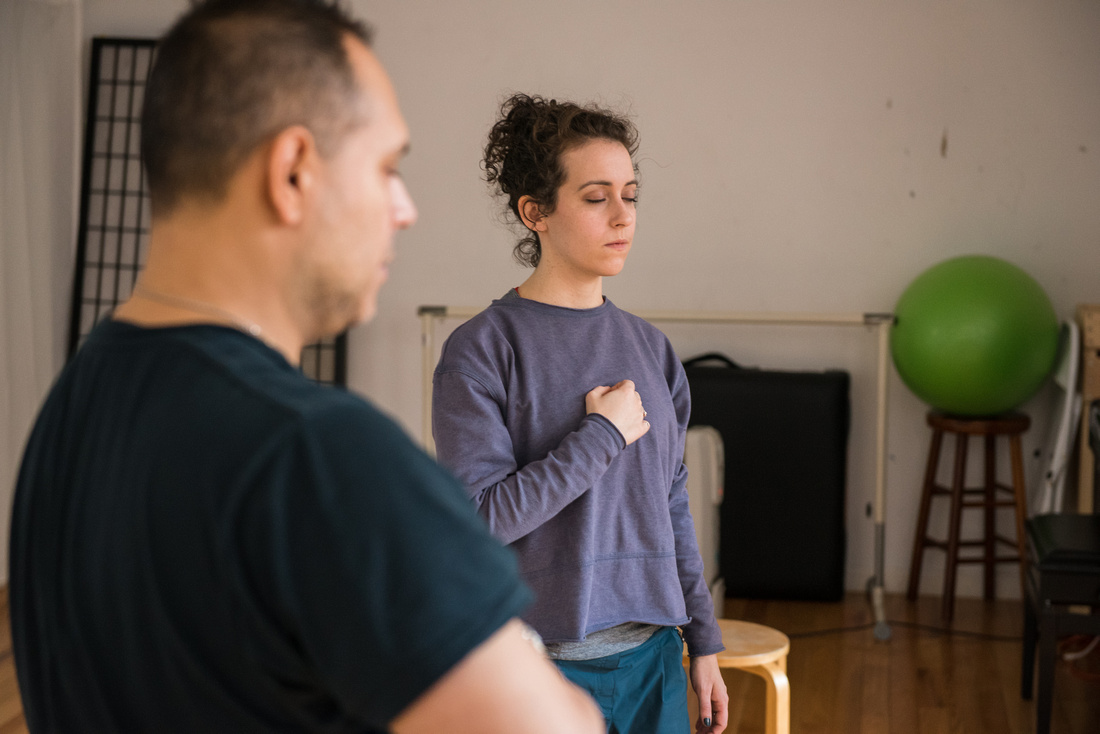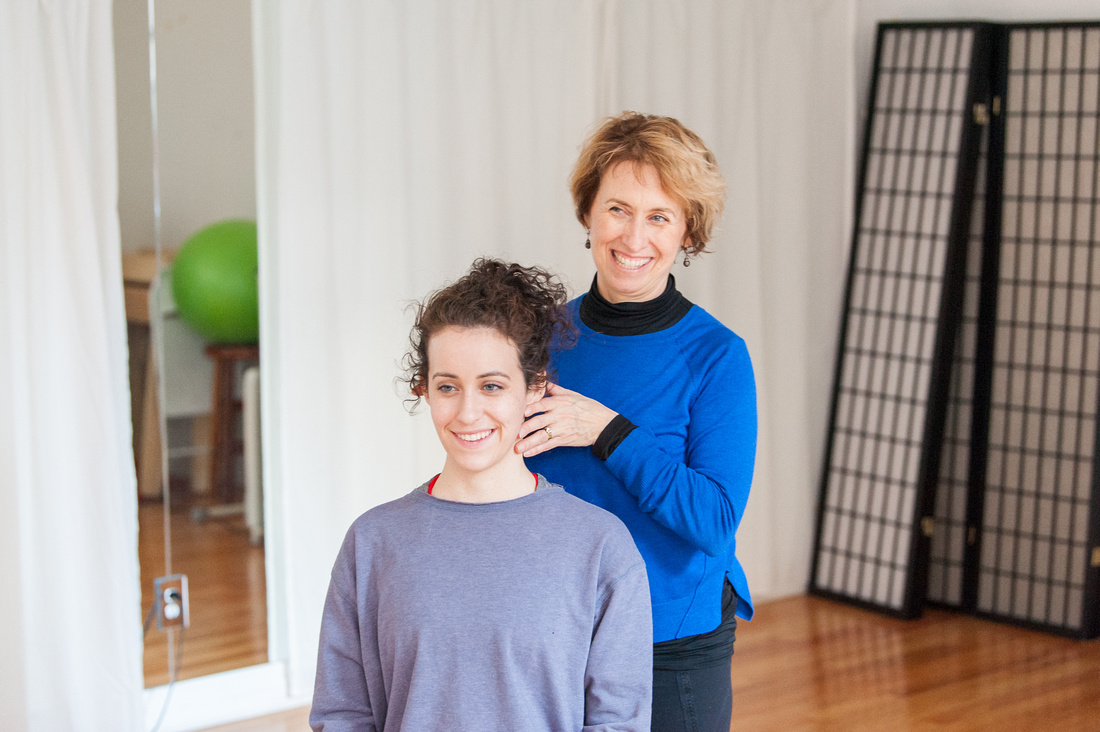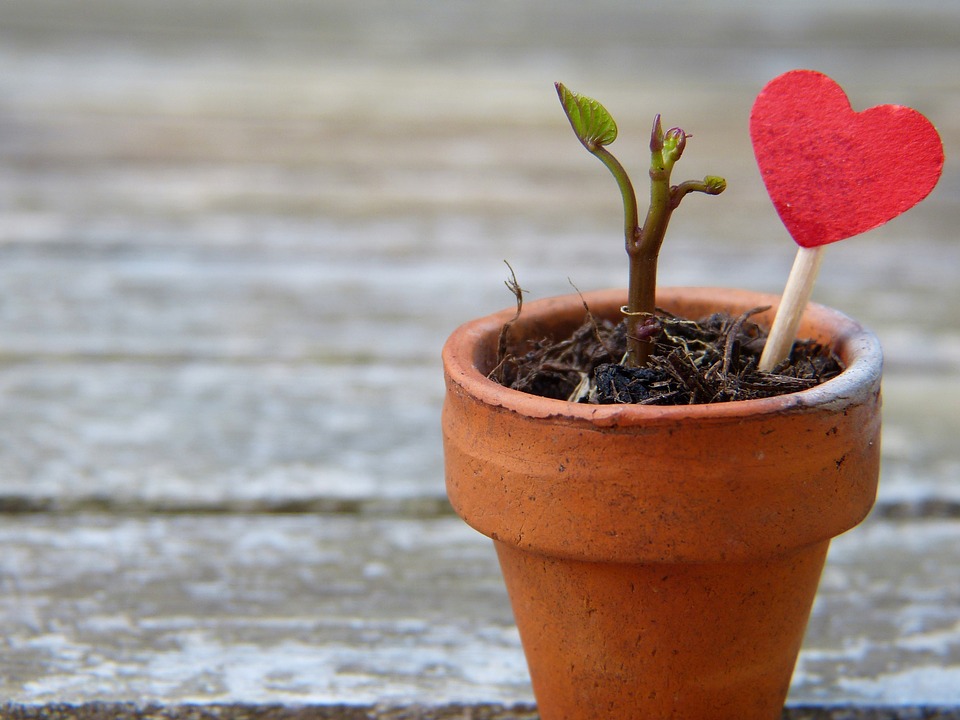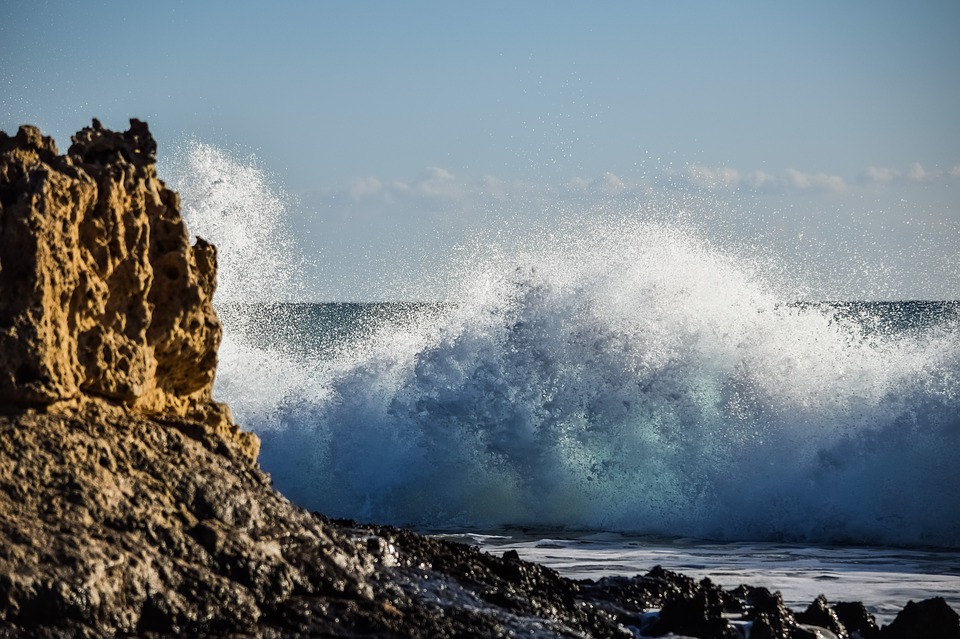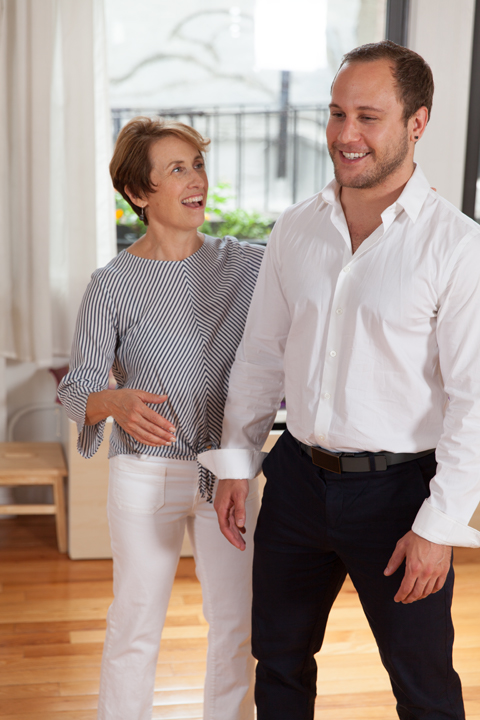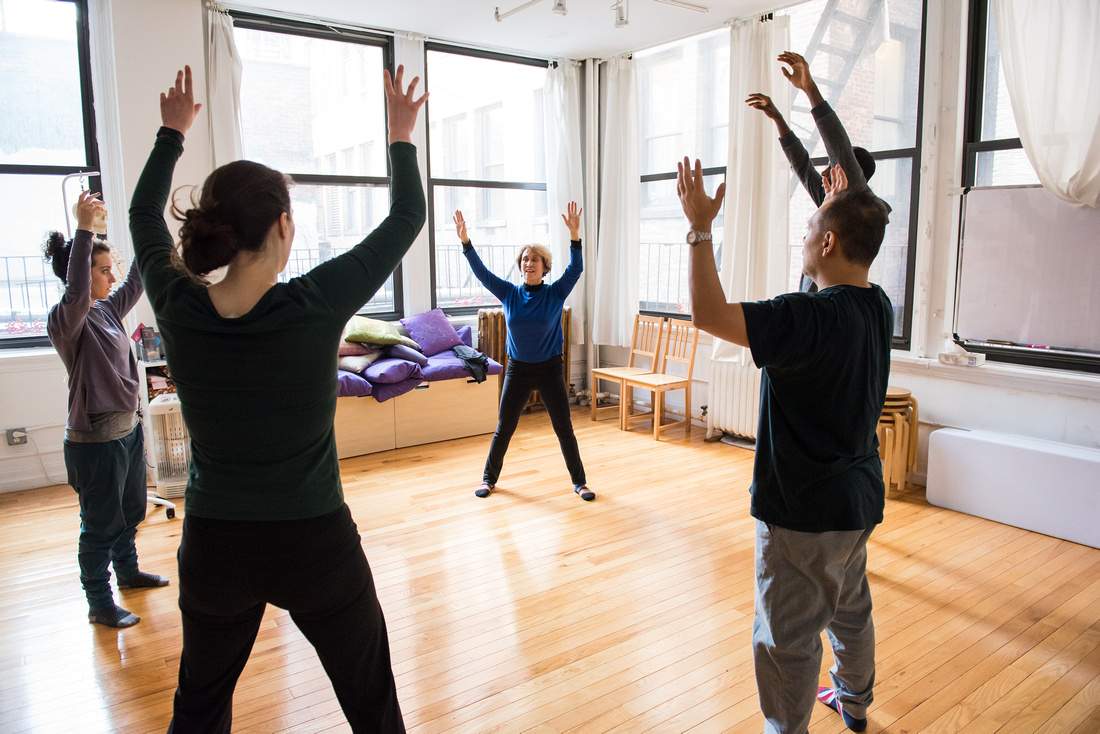
How You Move Matters
Free Alexander Technique Exercises, Tips, and Resources
A Lesson from Swallows
It’s September and I am getting a lesson in lateral collaboration from the flocking birds. Rather than a top down group organization with one executive leader, the flock as a whole moves together, sharing the leadership. Within large flocking groups, called murmurations, changes in direction happen from any single bird, passing like a wave or spiral throughout the group. Scientists have found that the movement changes each bird makes happen faster while flocking than when reacting to a loud sound or other external stimuli. This kind of embodied intelligence is efficient and maintains the steady integrity of the whole community.. Embodied intelligence is also vital for humans, within our own selves and in how we interact with each other.
Photo by Rowan Heuvel on Unsplash
Think for a moment of the flock as a metaphor for the whole person. Consider how collaboratively our bodies can move, as an integrated system - without second guessing ourselves. I recently wrote about my experience of interference within my internal communication system (proprioception). It took a lot of extra cerebral work to compensate while my sprained ankle healed. I have a renewed appreciation for how much daily effort goes into simple movement if there’s an interruption in the communication The metaphor of the flock helps me recognize the excessive mental work. Regaining my inner flocking involves letting go of what is not needed, especially that urge to get ahead of what I can sense in the present moment.
Our kinesthetic sense, the sense of moving in space and the flow of movement, is a key part of our embodied intelligence. Trusting and relying on this sense, can release us from “being in our heads” or over-thinking our actions. If the birds in flight were to anticipate the changes in direction they would interfere with the smooth transitions of the group, and the soaring pleasure of unified movement.
Whether it’s hard won or part of the invisible flow of day to day activities, collaborative movement brings pleasure, a sense of ease and unity. The murmuration of swallows is beautiful to experience if you’re able to get out in nature this time of year. .
Here’s an example:
Tree Swallows moving together, creating patterns as they fly. A lesson in collaboration.
Kinesthetic sense? Try this:
Here’s a simple following experiment to try with a friend, touching fingertips.
1. Sit or stand facing each other and connect with just the tips of your index fingers. One person will be the leader, moving their hand continuously and smoothly. If the follower is sighted, they will close their eyes as they move with the leader.
Could you notice what it’s like to follow without anticipating the next move.
2. Switch roles.
Did you notice how much you are relying on your kinesthetic sense? – was this easy? or do you find your executive mind wants to interfere?
3. Return to touching fingertips. This time you are a flock. The objective is to move smoothly and continuously together. One person will start the movement but at any moment the other person can redirect the movement. Try this with your eyes closed
Did you find some lateral collaborative flow?
Physical Gesture Exploration: In Life and On Stage
Gesture.
You've probably used gestures already today. With the flick of your hand, with the twist of your back or the flare of a nostril… you communicated your intentions very clearly. And in return, these gestures informed you about how your feelings, keeping you honest - at least to yourself.
Have you ever discovered that your shoulders are rising up to your ears while watching a very intense, suspenseful show — and then thought “wow, I guess that really got to me”? For most of us gesture happens before we realize that we are doing it. But at times we consciously select a gesture, like a gentle tap to let someone know “I’m with you”. We use gesture to articulate in an embodied way, distinct from using words.
I've been thinking and reading about gesture this month. Gesture and movement in theater has always fascinated me and driven my work. But the honesty and simplicity of the everyday gesture is on my mind as well. As I'm embarking on a three week exploration of impulse and gesture (see my Thursday group class for Actors), I thought I would offer up a self-study experiment in gesture and embodiment. Anyone can try this -- it's not just for actors!
Here’s an experiment to play with today while you are walking down the street.
Part 1: Observe all the different ways that the people around you are using their shoulders. If you could put words to the gestures, what are they saying?
Part 2: Experience your own shoulders, sensing tension, sensing lift or droop, pulling or shaping to the front or to the back? Asymmetry? What ever you are doing, do it more - exaggerate. Do words or images come to mind? Does this exaggerated gesture remind you of a feeling or emotion? Do you want more or less connection with other people? Slowly do less of your shoulder gesture. How does it feel to let some of it go? Consider completely letting go of your shoulder gesture? What might you lose? What might you gain?
Part 3: Take a little risk. Ask for your easy and expansive coordination: Let your neck muscles release holding your head, so that your head balance is fluid and lighter. Let your neck muscles release holding your shoulders so that your arms can swing more easily with your stride. Let your senses take in the area you are in or the street you are waking down. What thoughts and words are you expressing with this way of moving? What impulses do you feel connected with? What would happen if you used this open and easy shoulder gesture while interacting with the next person you meet?
PS Let me know how this goes!
Soften Rather Than Harden into Resistance
“The trick to doing this is to stay with emotional distress without tightening into aversion, to let fear soften us rather than harden into resistance.”
I recently shared a quote from the Buddhist monk Pema Chödrön about a practice for developing compassion. She proposes building empathy by imagining ourselves in a distressed person’s shoes, feeling what it’s like to be in dire circumstances. “We can expect to experience our fear of pain,” she reminds us, “Compassion practice is daring.” She invites us to learn to “relax and allow ourselves to move gently toward what scares us.”
What scares us in dire circumstances is related to what scares us in daily life. We can practice building our empathy by practicing ease in the face of daily distress. And we certainly have plenty of daily stimuli. Dealing with anything unexpected or unfamiliar can throw us off. We fear pain and also we fear the emotional stress being wrong. Many of us fear feeling the humiliation of being seen caught in a mistake. Avoidance of feeling shame keeps many people in the shell of habit, away from engaging in change.
Alexander Technique isn’t Buddhism or any kind of spiritual practice. But it does offer a means for change and receptivity. Sometimes in AT lessons, we feel unfamiliar with changes in posture or breathing. When a person is guided toward a more integrated physical presence they feel often feel more open, but also less like their usual self. Sensations, previously avoided, may be felt again.
Taking an AT lesson involves the audacity to gently and consistently let go of patterns while choosing to stay easy enough to feel more of… everything. Capable of a wide range of experience, we are designed to include it all. This is a great time to develop compassion!
Practice:
Make a tight fist. Now soften your hand and let it open and expand.
Repeat and notice the sensation of ease and un-doing. Notice how the sensation of expansion is light and multi-dimensional.
Now do the same with your neck, just for a moment. Tighten and sense how compressed your whole body becomes. And release the tightness! Sense how springy you are, how you can rebound up and out when you release your neck tension. You probably took a deep breath, too.
Without adding more tension this time, simply ask for another level of undoing in your neck. Notice how you feel when you do this – emotionally.
Can you continue to practice this simple act of softening when you see the news about refuges and immigrants? Or global warming?
Can you continue to practice this simple act of softening while you write your Mom a postcard or make a phone call?
Everything is changing - What can I count on?
Everything is changing - What can I count on?
Sometimes I crave change. When it's my own choice to change my habits, I look for change. When feeling playful, I might switch things up by instigating a change. At other times I hate change and the feeling of vulnerability that comes with unexpected change. I might then react with resentment or resistance. Change is happening all the time, and these days I often feel at odds with the rapid changes happening from the White House. When change feels out of control, what can I count on? Is there something that I can do to find support through change? How can I re-establish my sense of wholeness and unity so that my vulnerability isn’t a liability, but an aspect of my resiliency?
We’ve been training for change all our lives!
I was fortunate to grow up in place where I could wander and play outdoors with other kids for hours. We lived within the rules and limits set by our parents, but adults did not structure our play. I remember learning to climb trees by trial and error. At first, trial and error taught me about fear of falling and my tendency to let fear discourage me or stop me from moving completely. I saw how the other kids who could climb easily had a fearless attitude. I mimicked them; I stole their moves and their upward intensity. I developed a pattern of hand and footholds that allowed me to feel confident in getting up and down from one my favorite maple trees. I learned how light and free I was when I believed it was possible — I just had to follow the “up” in my being and my movement, not resist it. My upward intention and energy made it fun.
In Alexander Technique, and movement-based practices, there is an emphasis on liberating the “up and out” direction of our core posture and coordination. A former AT student (Joan Brittain) sent me an email about returning to her T’ai chi class after a very stressful time away:
Our teacher David said I missed some stuff but one of the things everyone needs to keep working on is keeping the "ding" up--keeping the crown of the head up--through every movement. As he demonstrated this, I thought, "Oh yeah, Alexander's primary control." Then, he said, looking me in the eye, that, ideally, we would maintain an awareness of the ding and of keeping our "frame" as we move, at every moment. And, I said with a certain look in my eye (you know that look), "Yeah, we could." He stopped, surprised, and repeated what I'd said under his breath, then chuckled, and moved on to his next point.
The ideal of keeping an upward direction going all the time seems like a tough expectation, but if we are treat ourselves as the lively and whole beings we are, we can experience an appreciation of an on-going process – and develop a sense of humor about the ebb and flow or trial and error in that process.
One thing we can surely count on is the constant state of change, and our intrinsic mind/body unity. Our unity or psychophysical wholeness is reflected in our design for freedom of thought and freedom in action.
Your “primary control” or “ding” or “upward intention” can be counted on to be constantly available. Your energy is always going on, and you are always organizing through your head/neck/back relationship, up and/or down. When any of us are afraid, we pull downward or inward. When we tighten down we interfere with our intrinsic response to gravity, we feel our discouragement, and we sense our reluctance to be moving. The way back to resiliency, and to grace, is through awareness of choice and willingness to let go of resistance. It can be as simple as unclenching your fist or agreeing to let your ribs be spring-y as you breathe. Releasing your thought/movement is an opening for a new direction and a renewed sense of wholeness. You can count on your natural design; you are a cohesively unified thinking, feeling and moving being.
F.M. Alexander’s 4th and last book, written in the 1930s and 40s at a difficult period of change and war emphasizes the significance of approaching action through an understanding of the psychophysical unity of self. He believed that with knowledge comes the responsibility to use that knowledge well. The book is titled, The Universal Constant in Living.




